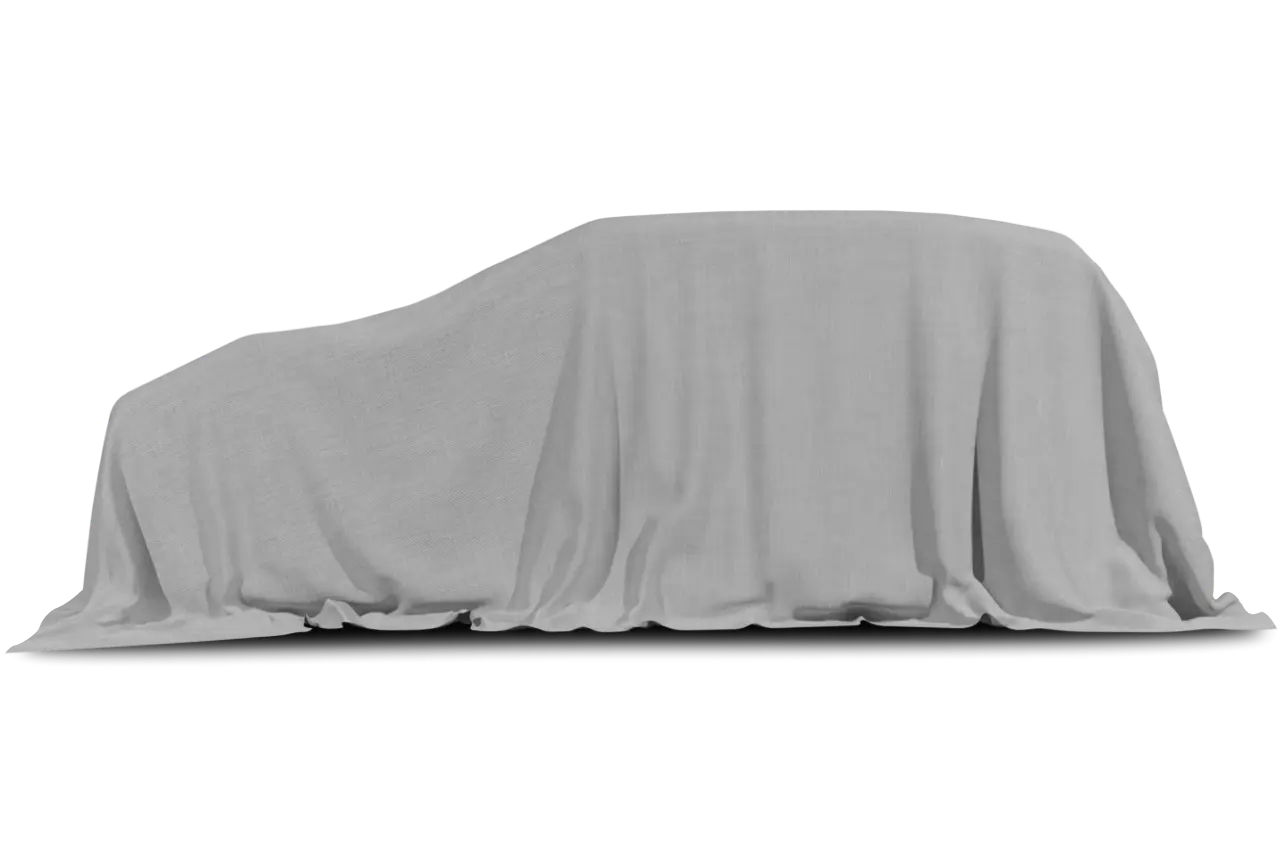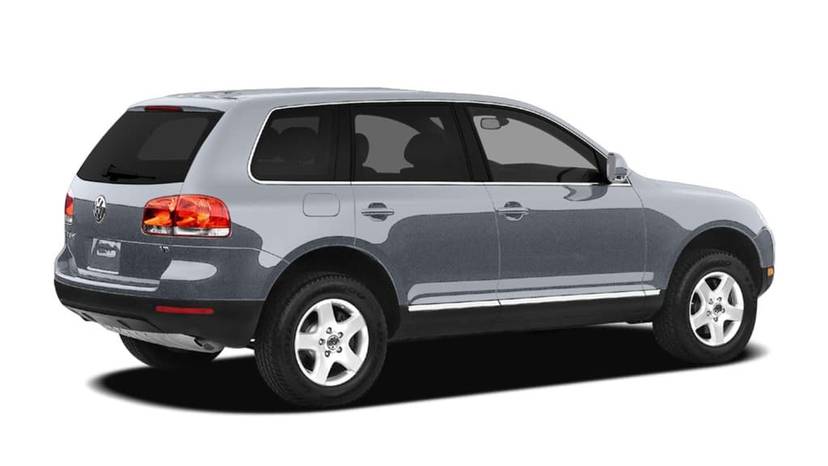
Diesel’s troubled trip
VW’s Touareg is a huge step forward for the technology, but will Americans ever buy in?
SOMETIME during the night of Sept. 29, 1913, aboard the steamer Dresden, Rudolph Diesel, age 55, slipped out of his overcoat and into the English Channel. His body was found 10 days later.
The inventor of the engine that bears his name had a Homburg hat full of troubles. He was broke. He suffered crippling headaches – the common cold of fin de siecle Europe.
And he was disillusioned. Diesel, a pacifist and utopian idealist, had hoped his engine, powered by renewable vegetable oils – biodiesel, we call it today – would give the common farmer and tradesman a source of great power to compete against the steam-driven leviathans whose smokestacks blackened the skies of Europe’s great cities.
Needless to say, that whole worker’s paradise thing never really panned out.
Like not a few founding fathers of the Industrial Revolution, Diesel had faith in technology as an agent of social justice. In this respect he was like Narcís Monturiol, the Spanish inventor of the world’s first mechanically powered submarine (1864), who imagined the vessel not as a weapon of war but as the common man’s conduit to an underwater utopia, a bathyspheric Shangri-La. (Jules Verne’s character Captain Nemo seems to have been patterned on Monturiol.)
As for Diesel, I wonder: If he were alive today, would he kill himself all over again?
Diesel engine technology is one of the most promising, and least appreciated, transportation solutions available. Though sales of diesels have nearly doubled in the last six years, according to J.D. Power & Associates, they still account for a mere 4% share of the U.S. light-vehicle market, compared with about 40% of the European market. Because of a rising tide of emission requirements, diesel-powered light vehicles have an uncertain future in the United States.
Diesel engines are 20% to 40% more fuel efficient than gas engines. For example: The gas-powered 2.0-liter VW Golf GL is rated at 24 miles per gallon city, 31 mpg highway, according to the EPA, whereas its diesel twin is rated at 38/46 mpg — half again higher. That’s roughly the efficiency advantage of a hybrid-electric powertrain such as the one in the new Ford Escape Hybrid. Diesel fuel is also cheaper than regular gas, averaging around 20 cents less per gallon nationwide.
Several high-tech oil-burners arrive in the U.S. this year, including the 2005 Mercedes-Benz E320 CDI, and our test vehicle, the 2004 VW Touareg V10 TDI, the fifth diesel-powered VW for sale in the U.S.
The Touareg is a glossy showboat of traction technology; its permanent all-wheel-drive system (4XMotion) includes a low-range transfer case, locking center and optional rear differential, augmented with electronic differential lock, so that the entire drivetrain can be cogged together in such a way that if any one wheel has traction, it can move the vehicle.
The vehicle sits on height-adjustable air suspension (maximum ground clearance of about 10 inches) with continuous-damping shocks. It is equipped with hill-descent and hill-ascent assist systems as well as a Scrabble board full of safety systems such as anti-lock brakes, electronic stabilization program and anti-slip regulation, which sounds a lot like traction control. This SUV-cum-tall wagon was wrapped up with beautiful nappa leather and wood trim and is graced with VW Group’s impeccable interior styling.
The Touareg is certainly one of the two or three most refined and commodious SUVs on the third rock. However, it has these faults:
First, for all its billy-goat traction systems, it’s shod with low-profile street tires (255/55R 18s) that supply very little purchase on anything other than hot, dry asphalt; going off-road in the Touareg would be like mountain climbing in Manolo Blahniks. (Als reasonable minds may wonder what people in West L.A. need with this high-tech Sherpa – but I suppose that’s off topic.)
Two, the Touareg is butt-ugly.
Three, the gas-powered V8 Touareg delivers atrocious mileage for what is, after all, a relatively small SUV: 14 miles mpg city, 17 mpg highway, according to the Environmental Protection Agency. H
owever, with the twin-turbocharged, 5.0-liter, 10-cylinder diesel engine under the hood, the vehicle returns something like 25% less guilt, with 17/23 mpg city/highway. Meanwhile, dyno numbers go through the sunroof: 310 horsepower (the same as the gas-powered V8) and a truly agricultural 553 pound-feet of torque at 2,000 rpm.
With all this torque on hand, it’s hard to imagine any Touareg owner resorting to the vehicle’s low-speed gear unless they are in the house-moving business.
During my week with the diesel Touareg, I quickly forgot the nature of the power plant. Unlike diesels of years past, the VW system is transparent, and so is the exhaust – no smoke. The delay in starting, waiting for the glow plugs to warm up, is brief – less than a second, I estimate. Though certainly not as whisper quiet as VW Group’s gas engines, this diesel is unobtrusive, making a sound most of the time that is like one long, warm chuckle. I did notice, however, a moaning at low speed coming from somewhere in the powertrain.
And the diesel Touareg is ferocious off the line: 6.2 seconds to 60 mph, quicker than a Porsche Cayenne S, its platform cousin. However, at L.A. highway speeds, the Touareg is less eager. Even with its six-speed automatic transmission, the Touareg doesn’t have as much passing power as you might hope. Diesel engines have oodles of low-speed torque for standing-start acceleration, but are limited in their rpm range and, consequently, their high-speed horsepower (which is why you won’t find too many diesel race cars).
Nonetheless, it’s clear that the diesel power plant is a far better fit for this 5,825-pound SUV than a gas engine.
Want one? Too bad. This car is not available in California.
Currently, no diesel-powered light vehicle is emissions-legal in California or the four states in the Northeast that have adopted California’s clean-air regulations. These states represent something like 40% of the national vehicle market.
As California goes, so does the nation. By 2007, federal emissions standards will require all diesels to be as clean as gas-powered vehicles. This is a tall order.
Diesel engines are compression-ignition engines, based on the principle that as a gas compresses, it grows hotter. A diesel engine uses a high compression ratio to superheat intake gases, which ignite when the fuel is introduced, serving as a gas engine’s spark plugs. A diesel doesn’t have spark plugs.
Diesel’s emissions troubles begin in the combustion chamber, where extremely high temperatures form oxides of nitrogen, or (NOx), a hazardous pollutant; anything but perfect combustion also results in particulate matter, or soot, of the kind you see blackening the bumpers of old, out-of-date diesel cars.
Automakers have all but solved the soot issue with particulate traps and highly accurate high-pressure fuel-injection systems. The NOx issue is being wrestled to the ground with advanced catalysts and technologies to reduce cylinder temperature.
Unfortunately, the diesel fuel for sale in the U.S. has high levels of sulfur, which contaminates the emission control systems of diesels (and forms sulfur dioxide, SO2, in the exhaust, besides). Low-sulfur diesel fuel is mandated by 2006. However, the emission rules being phased in now require diesel engines to stay super clean for more than 100,000 miles. This durability issue is yet one more thing that keeps diesel engineers up at night.
The last challenge is public acceptance. I would argue that diesel is highly n errated by environmentally conscious consumers. For as giddy as people are about gas-electric hybrids such as the Toyota Prius or the coming-soon Honda Accord hybrid, imagine a diesel-hybrid, perhaps with a plug-in option. Such a vehicle could return mileage of 50 to 70 mpg, with commensurate reductions in greenhouse gas and hydrocarbon emissions. As far as I know, there is no insuperable technical challenge to such a configuration. I think I could convert a Prius to diesel in my garage.
Even more tantalizing is the promise of biodiesel. When Diesel displayed his engine at the Paris exposition in 1900, it ran not on petroleum but peanut oil. Even today, a few eco-do-it-yourselfers are running their diesels on recycled vegetable oil collected from restaurants.
Biodiesel is vastly cleaner than conventional diesel fuel, offering something like 75% improvement in greenhouse-gas emissions over petroleum; it is derived from sustainable resources; it works perfectly in any diesel engine and may be blended with regular diesel fuel; it qualifies as an alternative fuel, which means that vehicles using it may avail themselves of coveted high-occupancy vehicle lane access; nearly two dozen retailers sell biodiesel blends in California.
So how much imagination does it take? What if a large percentage of America’s rolling stock were diesel-electric hybrids fueled with super-clean renewable fuels made from products grown in America’s farm states which could comprise the Saudi Arabia of biodiesel?
Wouldn’t it be deliciously ironic if, through the loops of happenstance, Rudolph Diesel’s engine did finally bring about his dream of an agrarian paradise?
2004 VW Touareg V10 TDI
Base price: $57,800
Price, as tested: $63,365 (including $615 destination)
Powertrain: 5.0-liter twin-turbocharged V10 diesel engine, six-speed automatic transmission, two-speed transfer case, locking center and rear differentials, full-time four-wheel drive
Wheelbase: 112.4 inches
Overall length: 187.2 inches
Horsepower: 310 hp at 3,750 rpm
Torque: 553 pound-feet at 2,000 rpm
Weight: 5,825 pounds
Acceleration: 0 to 60 mph in 6.2 seconds
Final thoughts: A diesel more lovable than Vin









